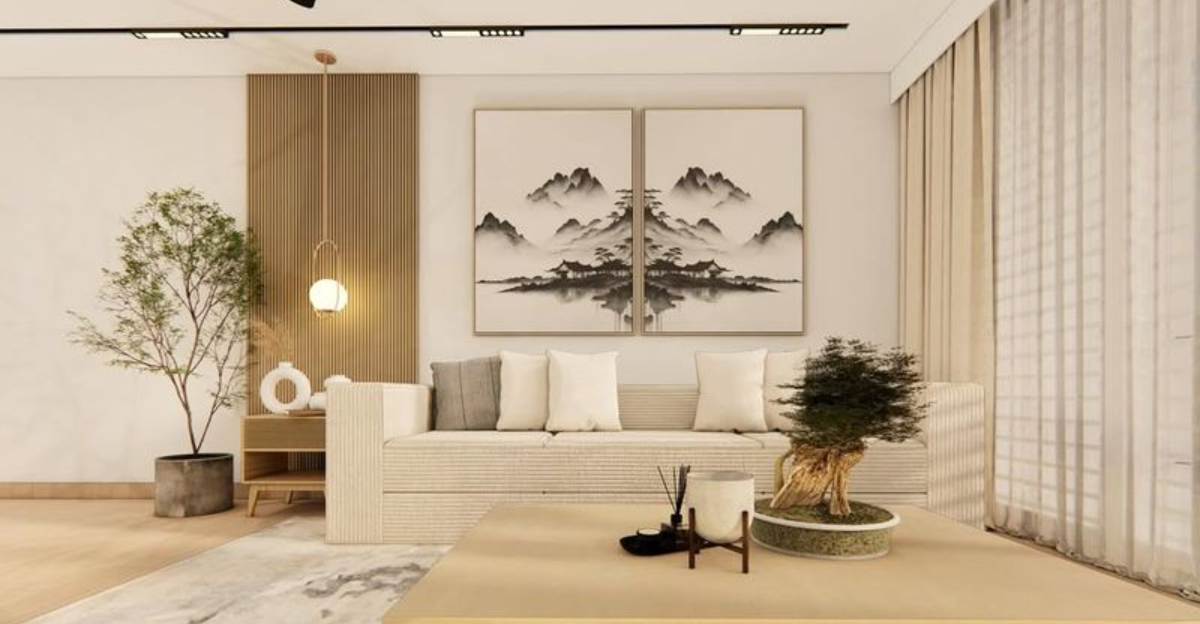Explore the captivating world of Japanese living room design, where minimalism meets elegance, and functionality is intertwined with natural beauty. This style is not just about aesthetics but embraces a philosophy of living harmoniously with one’s environment.
From choosing natural materials to optimizing space, this guide offers 24 diverse and inspiring ways to transform your living room into a serene Japanese retreat. Immerse yourself in these creative ideas that celebrate simplicity, balance, and tranquility.
Whether you’re drawn to the calming neutral palettes or the artful use of space, each section provides actionable insights to help you infuse your living space with authentic Japanese charm.
1. Tatami Mats
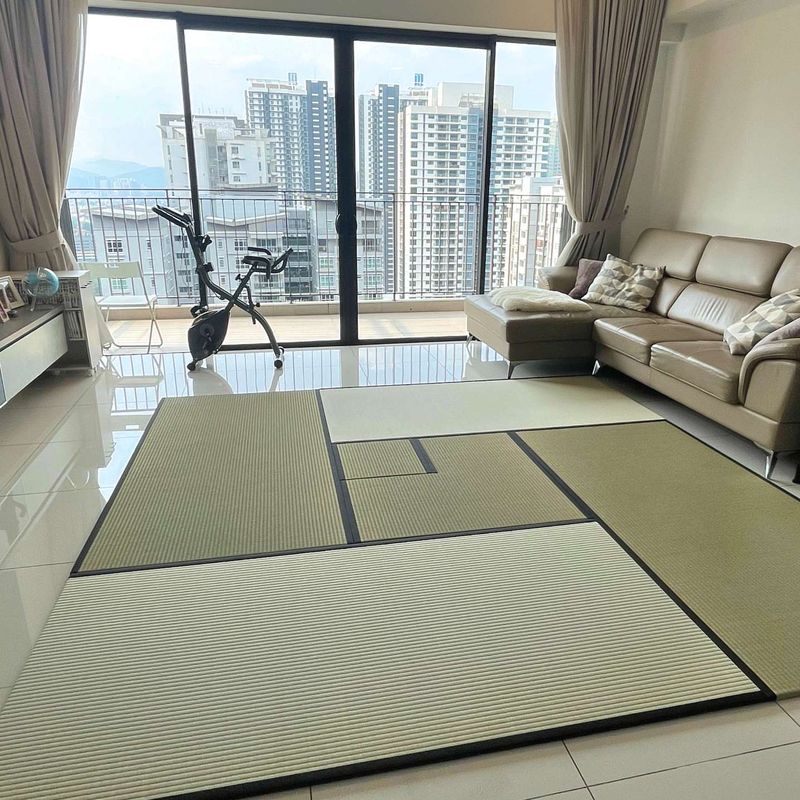
Imagine the gentle touch of a tatami mat underfoot, infusing your living space with a touch of authentic Japanese culture. Tatami mats, made from rice straw, provide a natural and comforting floor covering. They evoke a sense of calm and are perfect for creating a harmonious atmosphere.
Placing them on your living room floor adds texture and a unique cultural touch, inviting relaxation and simplicity into everyday life.
2. Shoji Screens
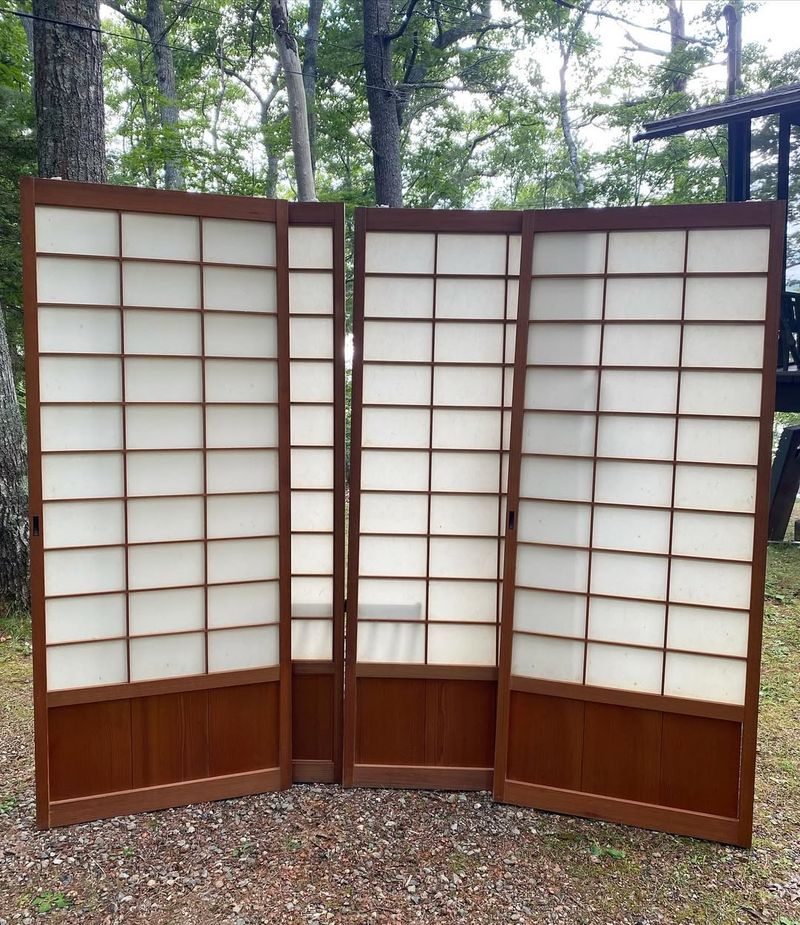
Shoji screens, with their delicate wooden frames and translucent paper, offer an elegant way to divide spaces while allowing soft light to filter through. Perfect for creating flexible living areas, these screens add elegance and privacy without overwhelming the room.
The gentle glow they provide can transform a space, fostering a serene and intimate environment that invites mindfulness and contemplation.
3. Neutral Color Palette

A neutral color palette is central to Japanese design, emphasizing tranquility and simplicity. Incorporating shades like beige, white, and soft gray can create a calming backdrop for your living room.
These colors reflect natural elements, allowing the beauty of wood, stone, and plants to stand out. This subtle, cohesive palette brings a sense of peace and openness, making the space feel larger and more inviting.
4. Low Furniture
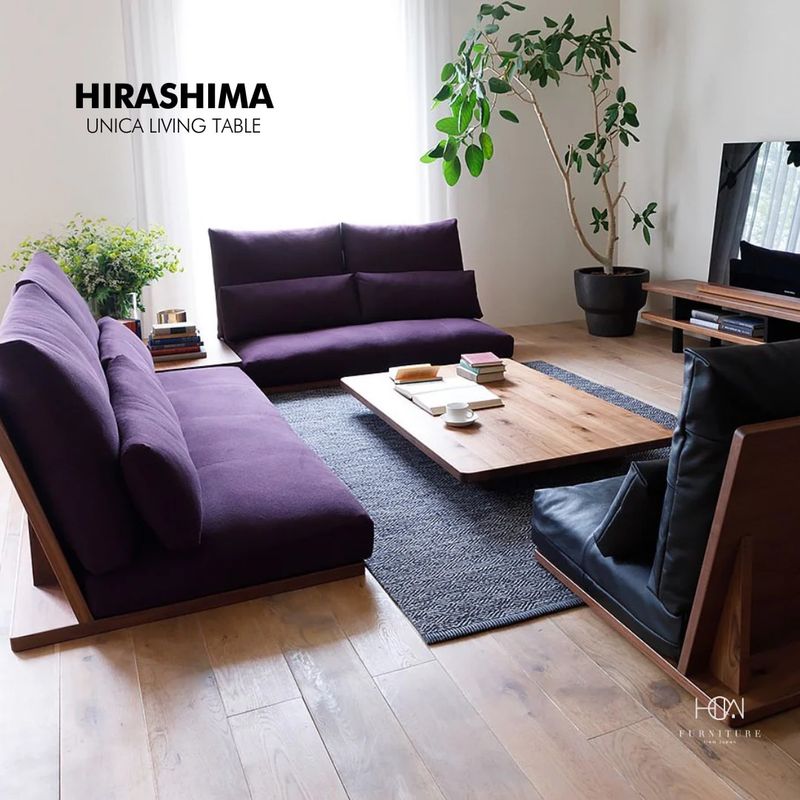
Adopting low furniture is a hallmark of Japanese living room design, fostering a closer connection to the ground and nature. Low tables, paired with cushions or floor seating, encourage a relaxed and intimate atmosphere. This design choice not only maximizes space but also evokes a sense of openness and ease, allowing for versatile arrangements that adapt to various activities and social gatherings.
5. Natural Materials
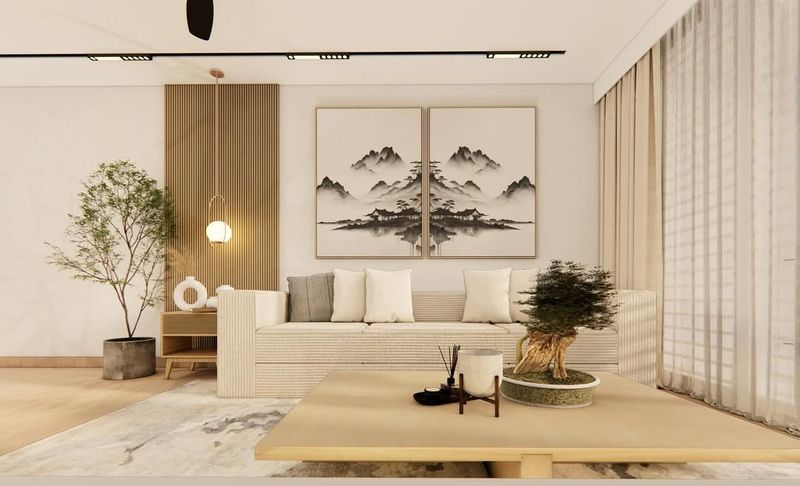
Embracing natural materials like wood, stone, and bamboo is essential for achieving an authentic Japanese aesthetic. These materials bring warmth and texture, creating a serene connection with nature.
Incorporating them into your living room design enhances the space’s organic feel, promoting a balanced environment. Their timeless appeal and durability make them a sustainable choice that resonates with the principles of simplicity and harmony.
6. Zen Garden Influences
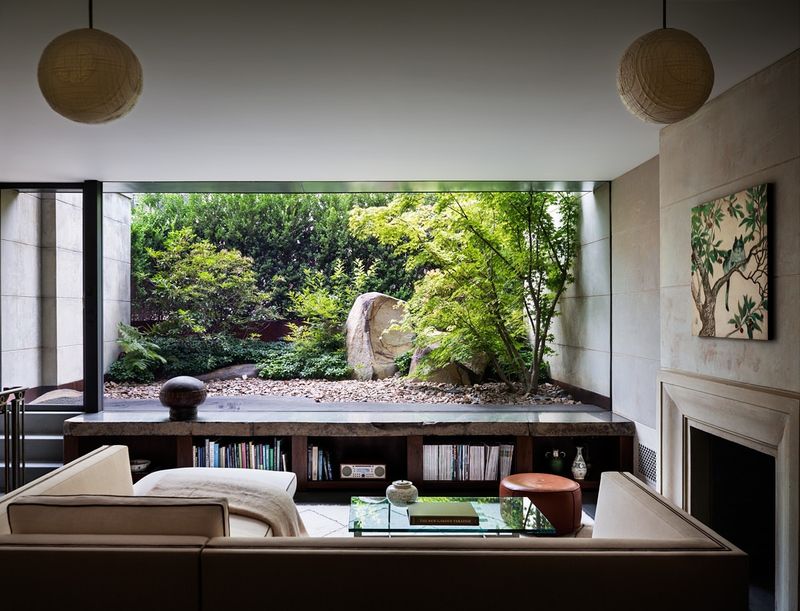
Drawing inspiration from Zen gardens, incorporate elements like rocks, sand, and bonsai into your living room to create a tranquil retreat. These features evoke a sense of calm and mindfulness, allowing you to escape the hustle and bustle of daily life.
A small indoor rock garden or bonsai plant can serve as a stunning focal point, inviting reflection and serenity into your home.
7. Wooden Elements
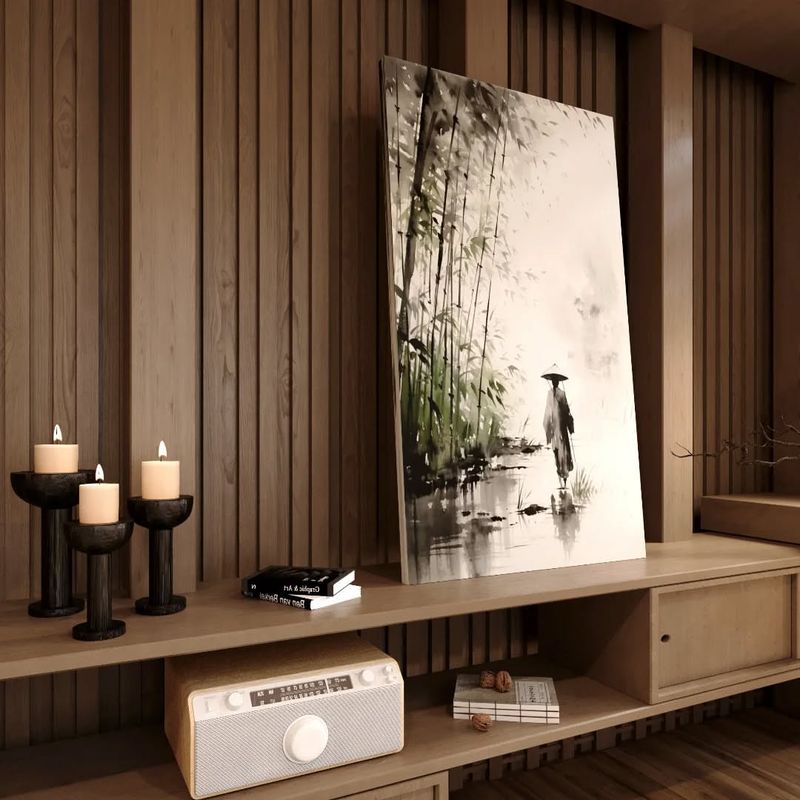
Wooden elements are integral to Japanese design, bringing warmth and natural beauty to your living space. Whether it’s a wooden floor, ceiling beams, or furniture, these elements create a cozy and inviting atmosphere. Their rich textures and earthy tones complement the minimalist aesthetic, adding depth and character to the room. This harmonious blend of natural materials fosters a sense of timeless elegance.
8. Minimalist Approach
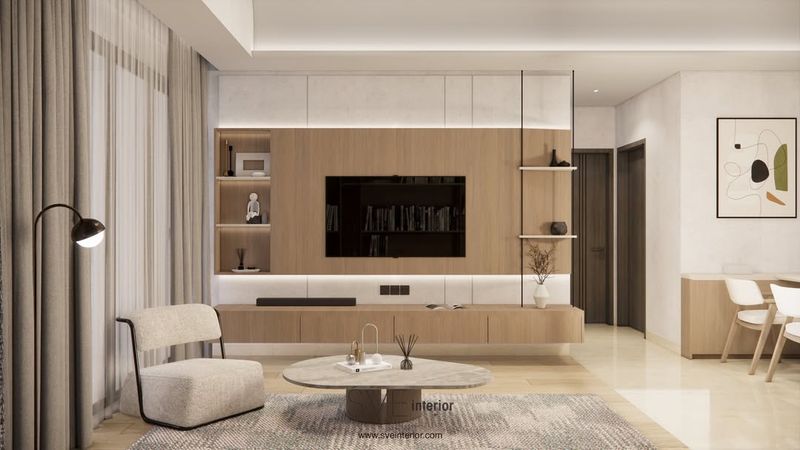
A minimalist approach is at the heart of Japanese living room design, focusing on simplicity and functionality. By decluttering and prioritizing essential pieces, you can create a serene and orderly environment.
This philosophy emphasizes quality over quantity, encouraging thoughtful selection of decor and furniture. The result is a balanced and tranquil space that promotes mindfulness and relaxation.
9. Traditional Art Displays
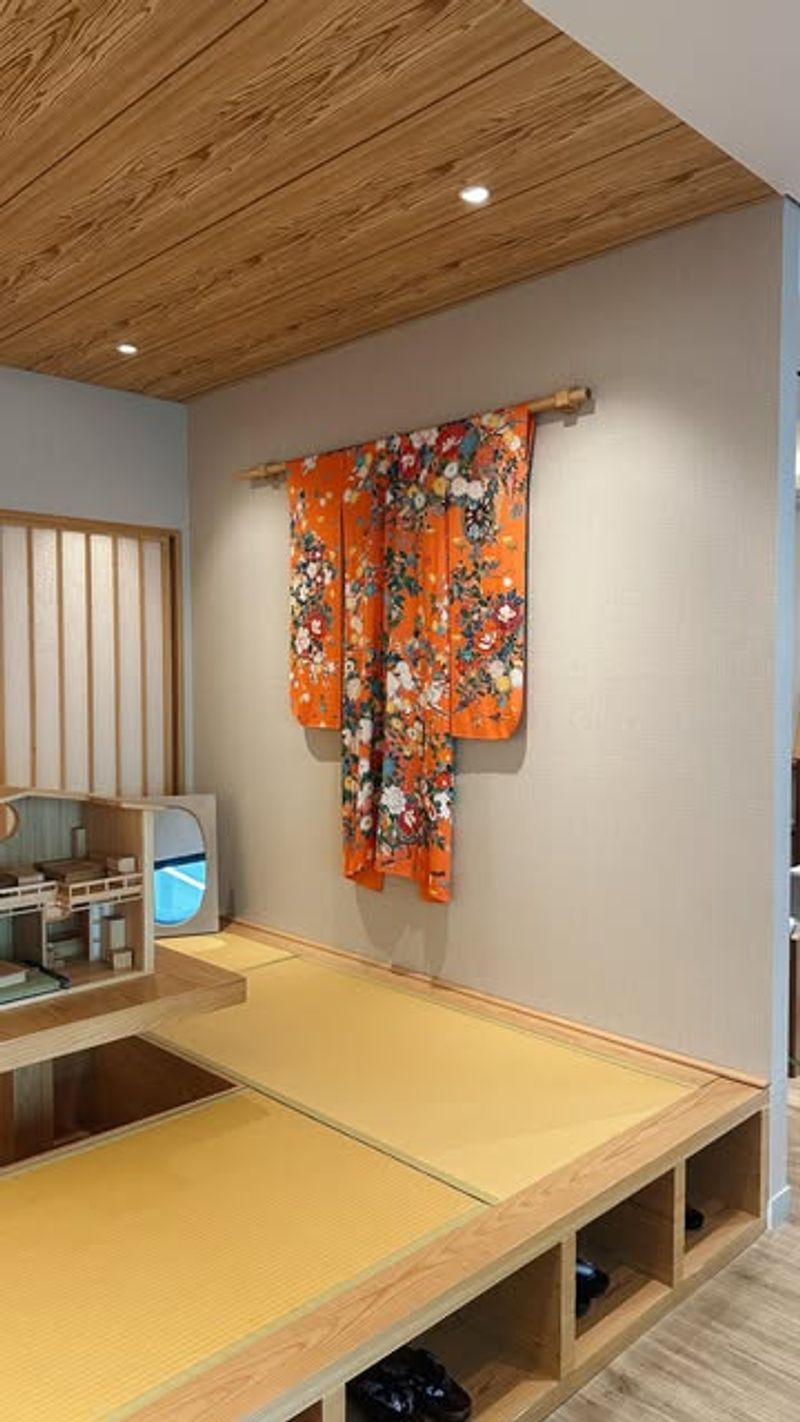
Traditional Japanese art, including calligraphy, scrolls, and woodblock prints, adds cultural richness and elegance to your living room. These pieces serve as beautiful focal points, celebrating the artistry and heritage of Japan.
Displaying them thoughtfully on your walls creates a sense of sophistication and depth, inviting admiration and contemplation. This blend of art and decor enhances the room’s overall aesthetic appeal.
10. Fusuma Doors
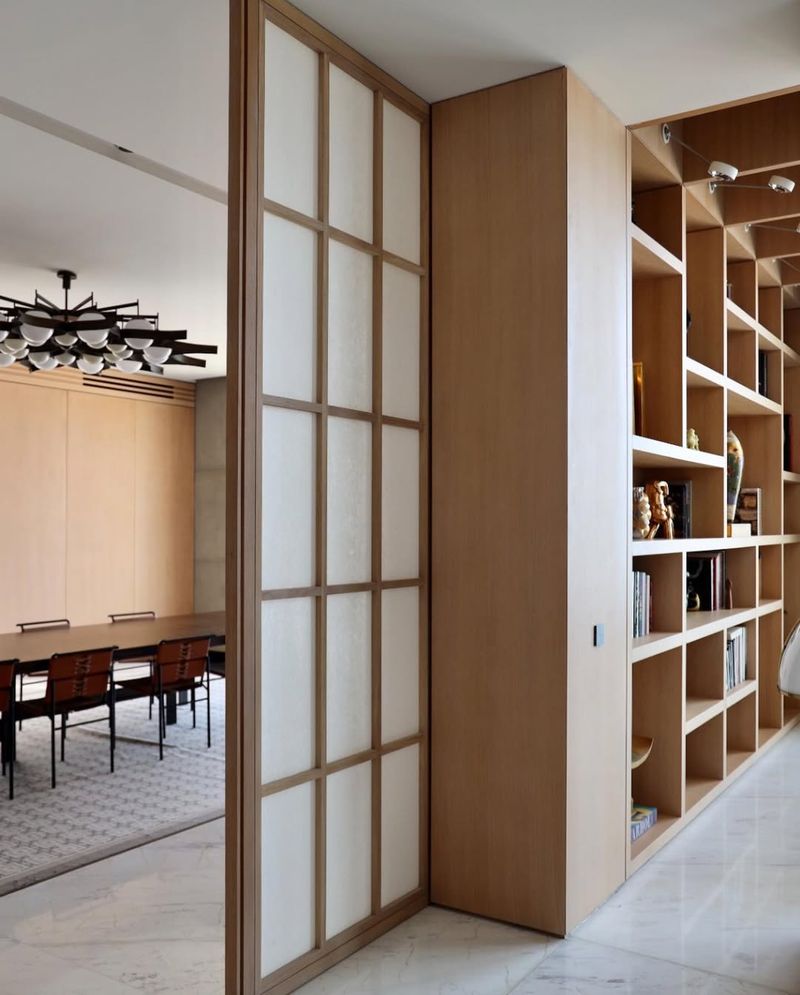
Fusuma doors, with their beautifully painted panels and natural wood frames, offer a refined way to divide and define spaces. Unlike traditional doors, fusuma can be easily moved or removed to create flexible living arrangements.
Their artistic designs add a touch of elegance and cultural significance, transforming your living room into a dynamic and aesthetically pleasing environment.
11. Indoor Plants

Incorporating indoor plants like bonsai, bamboo, and ferns brings a sense of tranquility and vitality to your living space. These plants not only purify the air but also enhance the room’s aesthetic, creating a lush and soothing environment. Their presence fosters a connection with nature, promoting relaxation and well-being, while adding a touch of greenery that complements the minimalist design.
12. Rice Paper Accents
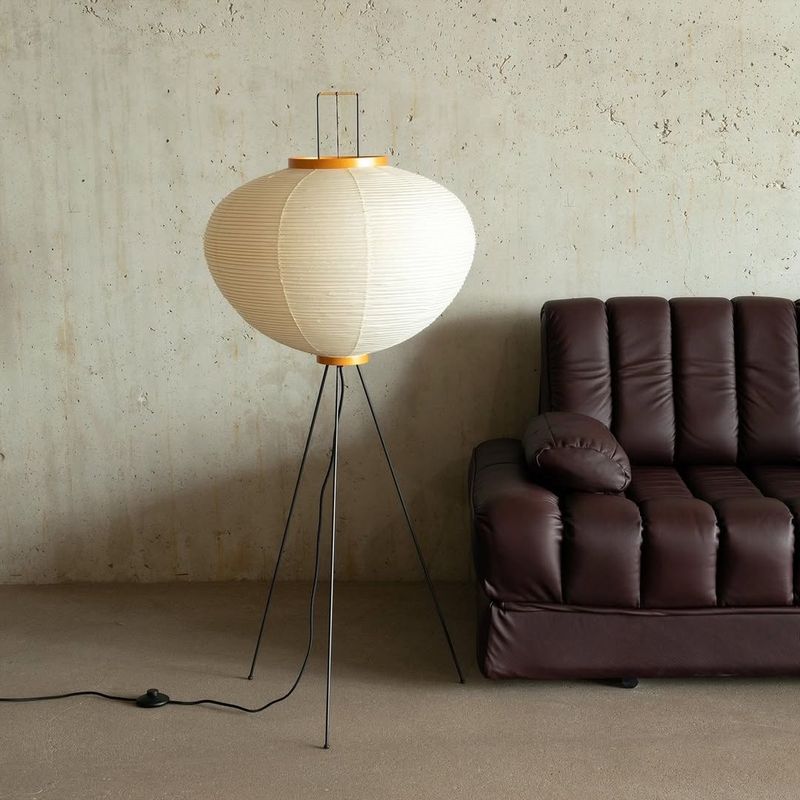
Rice paper accents, such as lampshades and shoji screens, add a delicate touch to your living room decor. Their subtle texture and ability to diffuse light create a soft and warm ambiance, enhancing the room’s comfort. These accents evoke traditional Japanese aesthetics, blending seamlessly with other elements to create a harmonious and inviting space that encourages relaxation and mindfulness.
13. Natural Light Emphasis
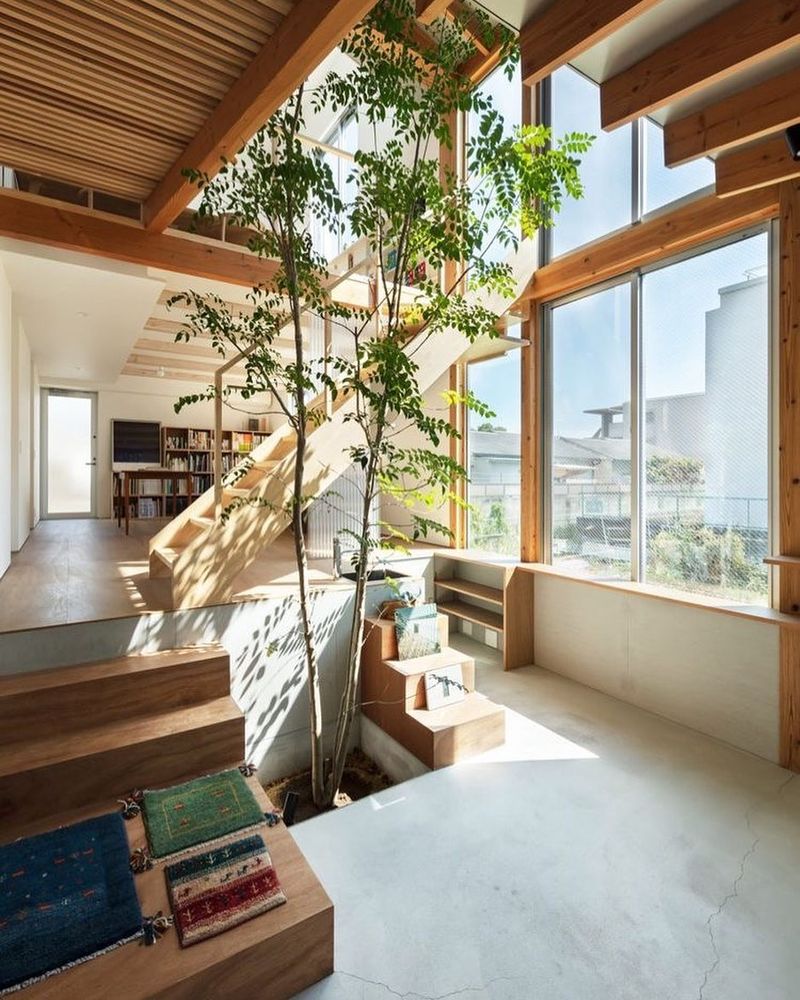
Emphasizing natural light is a key aspect of Japanese living room design, fostering a sense of openness and connection with the outdoors. Large windows and open spaces allow sunlight to fill the room, highlighting its minimalist design and natural materials.
This approach not only enhances the room’s aesthetic appeal but also contributes to a healthier and more uplifting environment.
14. Tatami Seating Area
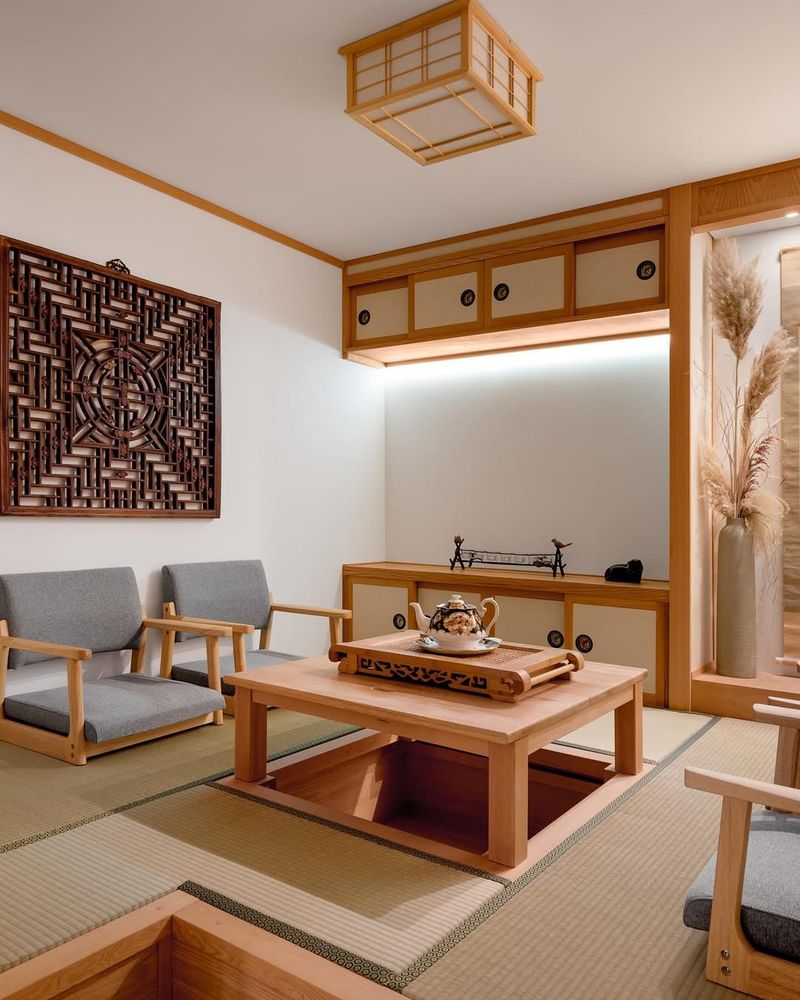
Creating a tatami seating area in your living room offers a unique and cozy space for relaxation and socializing. With cushions and a low table, this setup encourages intimate gatherings and a closer connection to the ground.
The natural texture and warmth of tatami mats provide a comforting touch, enhancing the room’s inviting and harmonious atmosphere, perfect for enjoying moments of tranquility.
15. Calming Water Features

Incorporating a water feature like a small fountain or aquascape can enhance the calming atmosphere of your living room. The gentle sound of flowing water adds a soothing auditory element, creating a serene and peaceful environment. This feature not only complements the minimalist aesthetic but also promotes relaxation and mindfulness, inviting a sense of balance and tranquility into your space.
16. Elegant Floor Lamps
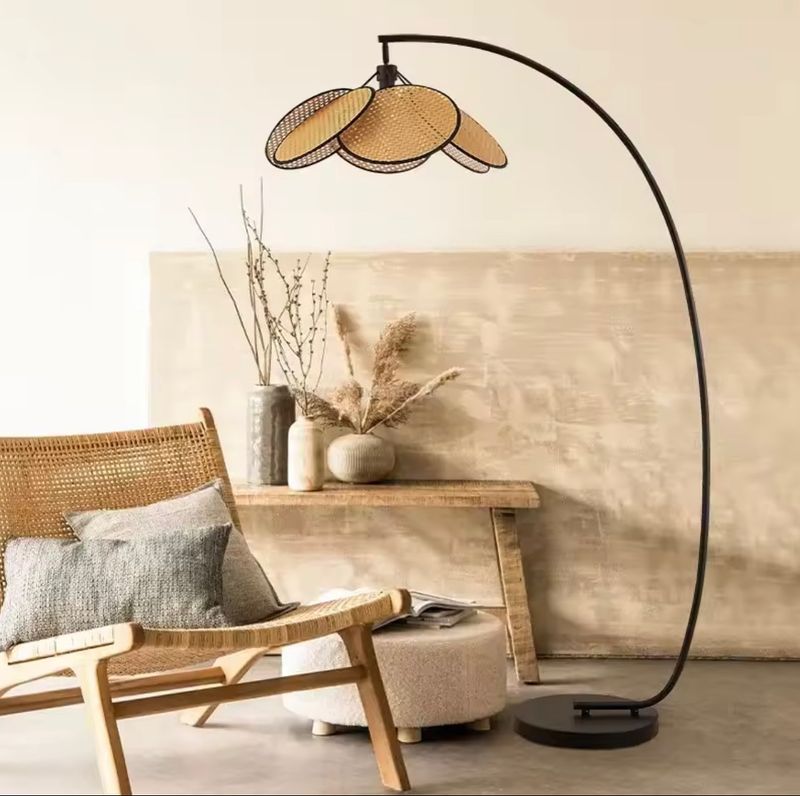
Elegant floor lamps are a stylish addition to a Japanese-inspired living room, offering soft, ambient lighting that enhances the overall decor. These lamps often feature simple, clean lines and natural materials, blending seamlessly with the room’s minimalist aesthetic. By providing gentle illumination, they create a warm and inviting atmosphere, perfect for relaxation and unwinding after a long day.
17. Textured Wall Panels
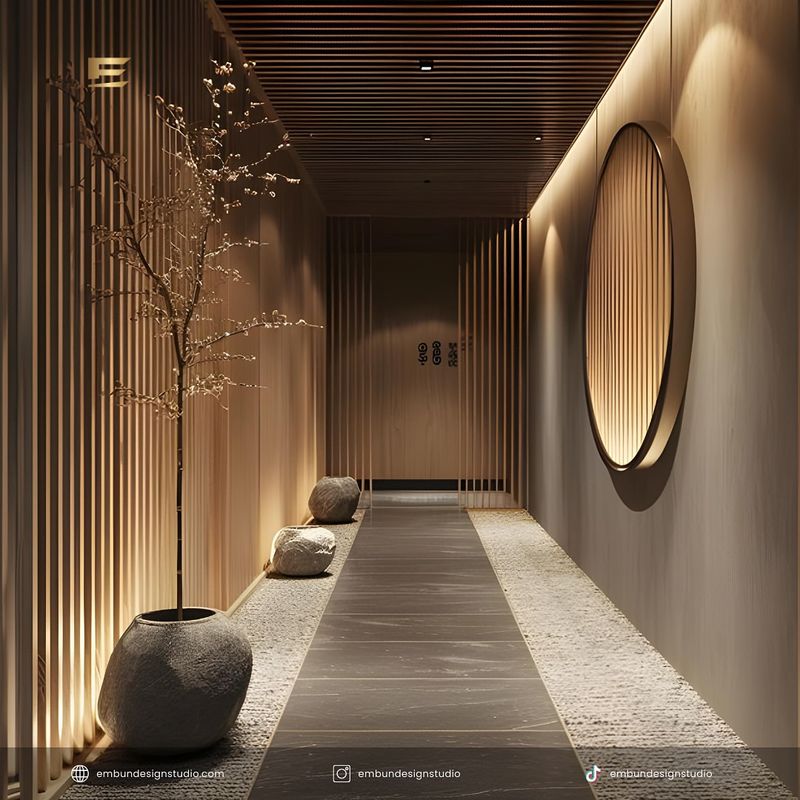
Textured wall panels can transform a living room by adding visual interest and depth. Using natural materials and subtle patterns, these panels create a sophisticated backdrop that enhances the room’s aesthetic.
They complement the minimalist design, providing a tactile element that invites touch and exploration. This unique feature elevates the space, making it both visually and texturally engaging.
18. Bamboo Accents

Bamboo accents offer a touch of natural elegance and sustainability to your living room decor. Whether used in furniture, decorative items, or wall features, bamboo’s unique texture and appearance bring warmth and sophistication.
Its versatility allows for creative applications, enhancing the room’s aesthetic while promoting an eco-friendly approach to design. Bamboo seamlessly integrates with other natural elements, creating a harmonious space.
19. Symmetrical Layouts

Symmetrical layouts are a hallmark of Japanese design, creating a sense of balance and order in your living room. By arranging furniture and decor in harmonious proportions, you foster a tranquil environment that feels both pleasing and organized.
This approach emphasizes simplicity and functionality, making the space more inviting and comfortable for daily living. Symmetry brings a timeless elegance to the room’s design.
20. Natural Stone Elements

Incorporating natural stone elements into your living room design brings a touch of timeless elegance and earthiness. Whether it’s an accent wall or decorative stone pieces, these elements add texture and depth to the decor.
Their raw beauty complements the minimalist aesthetic, creating a grounded and harmonious space that resonates with nature’s tranquility. Stone’s durability also ensures a lasting and impactful design.
21. Wabi-Sabi Philosophy
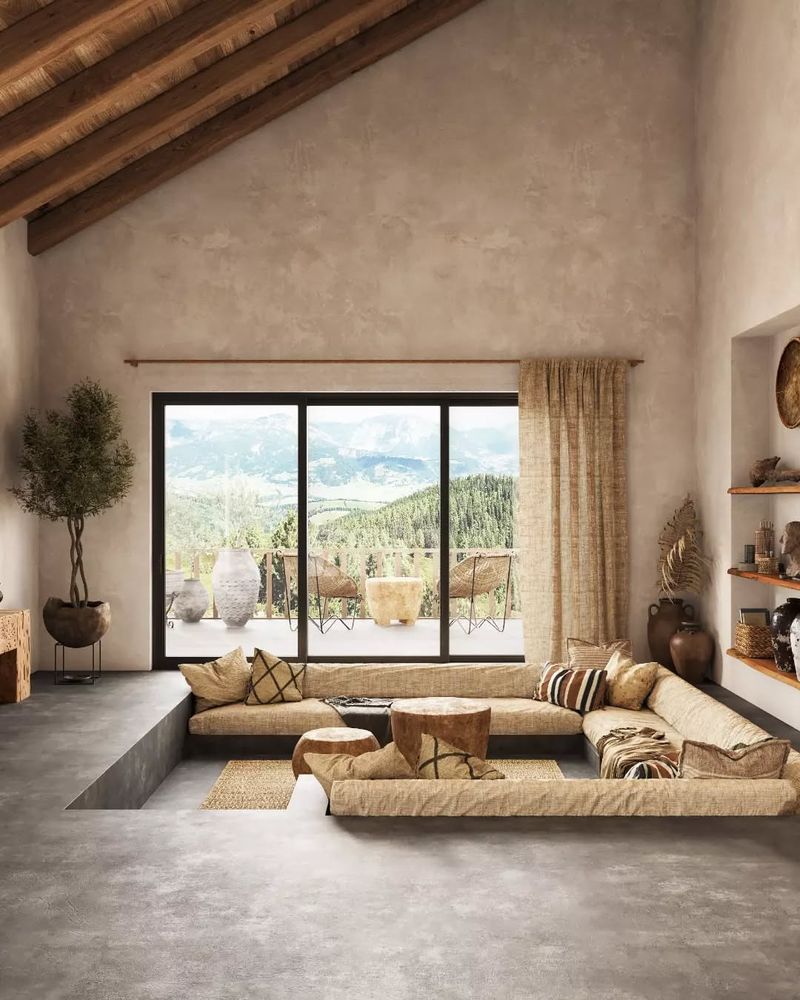
Embracing the Wabi-Sabi philosophy in your living room design means celebrating the beauty of imperfection and transience. This approach encourages the use of natural materials and handmade decor that evoke a sense of authenticity and simplicity.
22. Simple Window Treatments
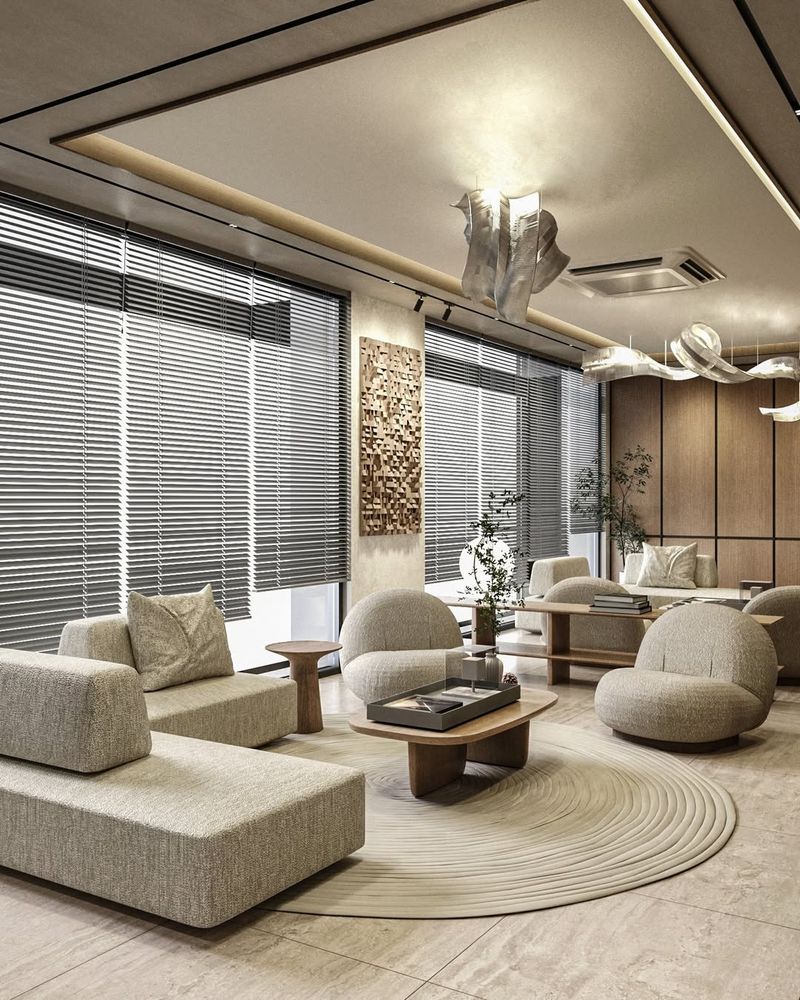
Simple window treatments, like sheer curtains or bamboo blinds, are essential for a Japanese-inspired living room. They allow natural light to filter through softly, creating a warm and inviting atmosphere. These treatments blend seamlessly with the room’s minimalist design, emphasizing simplicity and elegance.
23. Low-profile Storage
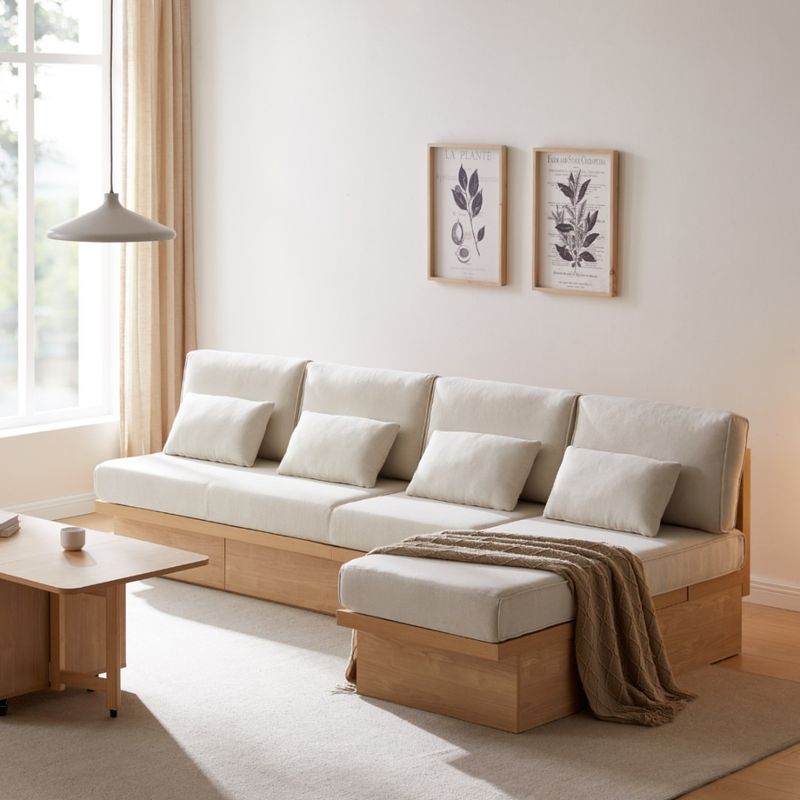
Low-profile storage solutions are vital for maintaining a clean and uncluttered Japanese living room. By incorporating minimalist shelves and hidden compartments, you ensure that the space remains organized and serene.
This approach emphasizes functionality without sacrificing style, allowing you to discreetly store belongings while preserving the room’s open and airy feel. It’s an elegant way to achieve a harmonious balance between practicality and aesthetics.
24. Cultural Touches
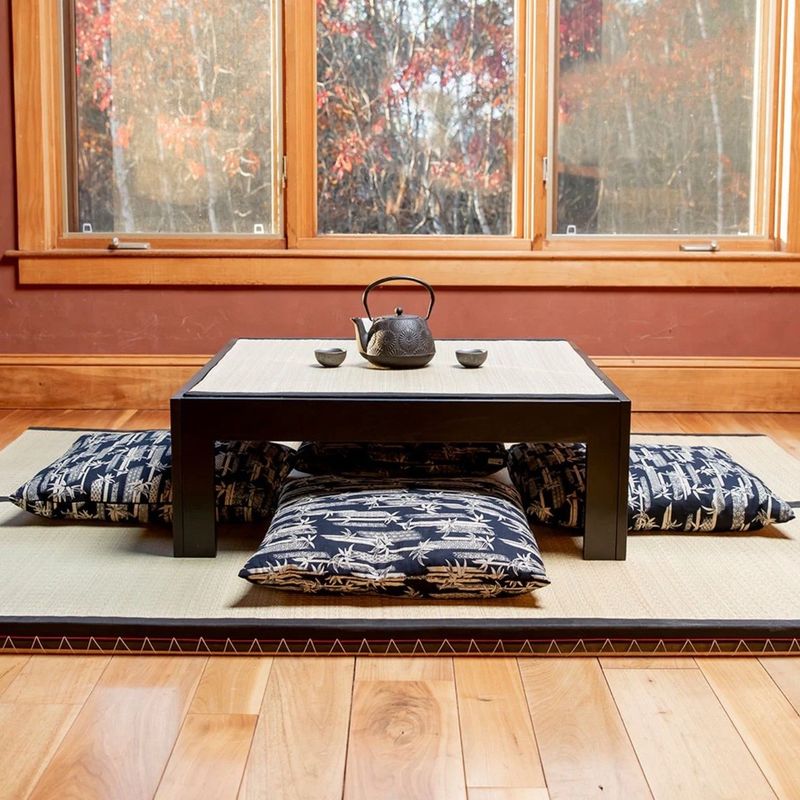
Incorporating cultural touches like traditional textiles, pottery, and artifacts into your living room adds authenticity and character. These elements celebrate Japanese heritage, providing unique focal points that enrich the room’s decor.
By thoughtfully integrating these pieces, you create a space that feels both personal and connected to tradition, inviting admiration and appreciation for the artistry and history they represent.

